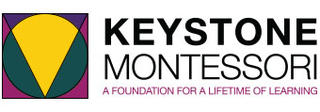
The Growth of Montessori Education
If you’re reading this article, you are likely already a champion of Montessori education. At the very least, you’ve heard anecdotes or read other articles that have piqued your interest and you want to learn more.
We truly believe that Montessori is an excellent option for children. Beyond that, we believe the philosophy has the power to change the world. Montessori was an advocate for peace, equality, and respect for human beings, no matter their age or abilities.
Maria Montessori’s earliest work centered on children who were marginalized by the society they lived in. She believed that lifting up all members of a society was best for everyone. Today, the vast majority of Montessori schools across the globe are independent schools, leaving access to this important model generally limited to those who can afford it.
What can we do to ensure Montessori is available for everyone? The search for a solution is ongoing, but the journey is a critical one that we must continue to work toward.
How It All Began
At the onset of the twentieth century, a newly graduated Dr. Montessori was put in charge of the Orthophrenic School in Rome. Prior to her arrival, the children who lived there were essentially tucked away from the rest of society in a dull and unstimulating environment. Physicians today may have diagnosed these children with learning disabilities, autism, or other disabilities that caused them to present slightly outside what was considered ‘acceptable’ at the time. These disabilities were not understood, so the solution was to simply send the children away.
Montessori and her colleagues would not accept the environment as it was left to them. They quickly began observing the children, learning more about their needs, and developing activities and materials that helped develop and nurture the senses as well as teach valuable practical life skills. The children soon learned to master activities such as preparing their own meals, and eventually moved on to academic pursuits within the school. After some time, many of these children were able to perform as well as ‘typical’ students on standardized tests.
Shortly after her time at the Orthophrenic School, Montessori was called upon to begin a school in a low-income neighborhood in Rome. The resident parents of young children had to work long days, and since the children were too young to attend grade school, they were left to fend for themselves at home. This resulted in general disruption and chaos, so the manager of an apartment complex thought a primary school could be the answer.
Casa dei Bambini was established in 1907. Once again, Dr. Montessori set to creating materials and lessons that supported the development of the children’s senses and practical life skills. This soon expanded to math, language, and other subject areas. She found it critical to meet with the children’s mothers on a regular basis, so that they may be informed about the learning that was taking place.
It quickly became apparent that not only was this education a positive experience for the children, it was having a profoundly positive impact on the families, and in turn, the entire neighborhood.
Montessori Today
Montessori education continues to flourish today, well into the twenty-first century. In countries across the globe, parents seeking something different than conventional education methods turn to Montessori.

